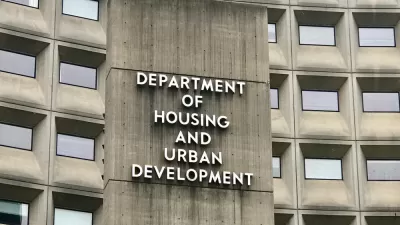HUD can provide $10 million to tenant organizers each year, but the funding has largely gone unspent since the early 2000s. Will that change with a new administration and newly approved HUD secretary?

Dina Levy will never forget the miserable conditions she found at a low-rise 200-unit complex in South Dallas. The management company at the for-profit Crest A Apartments barely maintained the property; leaky ceilings, bad plumbing, and peeling paint were all too common. Security was nonexistent and violence and crime were a constant problem.
Perhaps most shocking of all, the building had a snake infestation, with the reptiles slithering in through people’s apartment windows and taking up residence.
Levy is now a senior vice president at New York Homes and Community Renewal, the state’s affordable housing agency. But in 1995 she was a VISTA national service volunteer assigned to work as an organizer with the Texas Tenants Union—part of the first cohort of VISTAs funded by the U.S. Department of Housing and Urban Development (HUD) to organize tenants in privately owned, HUD-funded affordable housing. Levy was responsible for helping residents at Crest A Apartments form a tenants association to build the sort of “strength in numbers” power they’d need to stand up to the management company and get the safe, clean living conditions one might expect at a building subsidized by the federal government.
“Texas is not a tenant-friendly place,” says Levy. “If you organize, you’re taking a fair amount of risk that the owner will retaliate, the management company will try to evict. It was awe inspiring that people were willing to step up when they were living in poor conditions. … [Tenant leader] Angela Williams and the rest of the tenant association were badasses and wouldn’t give up.”
The fight with management lasted for more than a year. The tenants association’s strategy was to garner press attention for the squalid living conditions and make it difficult for HUD officials to ignore what was going on. And the efforts paid off. HUD took over management of the building in December 1996, and after two more years of advocacy by the tenants association to ensure the building wouldn’t be sold to a market-rate developer, the agency purchased it outright in 1998, eventually transferring ownership to Dallas City Homes, an affordable housing nonprofit.
The conditions at Crest A weren’t a one-off example of poor living conditions at HUD-subsidized private housing. Certainly not every building is in bad shape and the agency inspects the housing it subsidizes. But problems can fall through the cracks and unscrupulous building managers can game the system by fixing just enough problems to pass an inspection. Tenant rights advocates say that’s exactly why it’s so important to have organized tenant associations.
“Tenants can be a partner to HUD to oversee the multibillion-dollar investments HUD is making in housing,” says Michael Kane, executive director of the National Alliance of HUD Tenants (NAHT). “If they’re organized they can articulate problems and tell HUD and building owners what can be fixed and improved. We call it an eyes and ears program.”
For a period in the 1990s and early 2000s, HUD was on board with the idea. The agency disbursed millions of dollars in grants to fund tenant organizing and education campaigns in HUD-subsidized housing that was under threat of going back to the private market.
But despite having Congressional authority to spend up to $10 million each year on tenant organizing via the Multifamily Assisted Housing Reform And Affordability Act of 1997, HUD ceased funding organizing efforts for the bulk of the last two decades, leaving nearly $200 million dollars on the table in the process.
How HUD Preservation Led to Organizing
For decades, federally subsidized affordable housing was the sole domain of public housing agencies. But in 1959, Congress created the first programs to subsidize private construction of below-market rate housing. The programs ....
FULL STORY: HUD Has Money for Tenant Organizing. Why Isn’t the Agency Spending It?

Planetizen Federal Action Tracker
A weekly monitor of how Trump’s orders and actions are impacting planners and planning in America.

Restaurant Patios Were a Pandemic Win — Why Were They so Hard to Keep?
Social distancing requirements and changes in travel patterns prompted cities to pilot new uses for street and sidewalk space. Then it got complicated.

Maui's Vacation Rental Debate Turns Ugly
Verbal attacks, misinformation campaigns and fistfights plague a high-stakes debate to convert thousands of vacation rentals into long-term housing.

In California Battle of Housing vs. Environment, Housing Just Won
A new state law significantly limits the power of CEQA, an environmental review law that served as a powerful tool for blocking new development.

Boulder Eliminates Parking Minimums Citywide
Officials estimate the cost of building a single underground parking space at up to $100,000.

Orange County, Florida Adopts Largest US “Sprawl Repair” Code
The ‘Orange Code’ seeks to rectify decades of sprawl-inducing, car-oriented development.
Urban Design for Planners 1: Software Tools
This six-course series explores essential urban design concepts using open source software and equips planners with the tools they need to participate fully in the urban design process.
Planning for Universal Design
Learn the tools for implementing Universal Design in planning regulations.
Heyer Gruel & Associates PA
JM Goldson LLC
Custer County Colorado
City of Camden Redevelopment Agency
City of Astoria
Transportation Research & Education Center (TREC) at Portland State University
Jefferson Parish Government
Camden Redevelopment Agency
City of Claremont





























